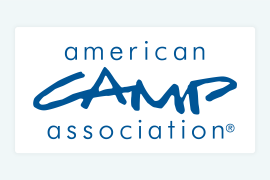After months of political posturing in DC, Congress has finally passed the next federal relief bill to support businesses and individuals who have been suffering as a result of the pandemic. A number of key provisions that ACA has been advocating for at an unprecedented level since the summer are included in the bill. These key provisions will provide much-needed relief to many camps and youth-serving organizations across the country.
Paycheck Protection Program (PPP) Form 1502 Fix
The first of these provisions is a fix to the technical challenge with the original PPP program that prevented the majority of camps from maximizing their loan amount. The original program disadvantaged summer seasonal businesses by not allowing the use of a summer date field to calculate the loan amount. After significant advocacy and education from ACA, the Small Business Administration (SBA) did add a summer date field on April 27, the majority of banks had officially booked their loan by filing a Form 1502. The guidance prevented the modification of a loan after Form 1502 was filed, essentially blocking most camps from taking advantage of revised guidance.
The $900 billion relief package passed by Congress on Monday includes a provision that allows any business that was not able to take advantage of changes to guidance to the program a one-time opportunity to modify their original loan, even if a Form 1502 has been filed. So long as loans have not already been forgiven, this provision allows camps to modify their original loan amounts using the summer date field added in April.
Second PPP Draw
The bill also allows businesses with not more than 300 employees that have been significantly impacted by the pandemic an opportunity to have a second draw on the PPP program. To qualify as significantly impacted, businesses will be required to show a 25-percent drop in receipts from the first, second, or third quarter of 2020 in comparison to the same period the previous year. While small adjustments have been made to the program to allow it to operate more effectively, it remains very similar to the original program with a 60/40 cost allocation between payroll (and other qualifying expenses) and non-payroll costs in order to receive full forgiveness.
If funds are expended on payroll and other qualifying expenses, the loan will be fully forgivable. Additionally, the second draw allows businesses to use any 12-week period beginning February 15, 2019, through February 15, 2020, to calculate the maximum loan amount, up to $2 million, meaning camps will be able to use the summer date field in this second draw as well.
Tax Deductibility and Other Improvements
Another challenge with the original PPP program was that while PPP funds were tax-free income, businesses were not allowed to deduct any of the expenses covered by the loan. According to reporting, the goal was for Congress to clarify its original intent to allow for the deduction of these expenses, contradicting an earlier ruling by the Treasury. Including this language in the bill clarifies the original intent for how these expenses should be treated and increases the financial relief to qualifying businesses.
Camps that prudently applied for an EIDL loan automatically received an emergency grant of up to $10,000 whether or not their loan application was approved and whether or not they chose to accept the EIDL loan. The amount of the grant received, per the terms of the third COVID-19 relief bill, was to be deducted from the forgivable amount of a PPP loan. The new relief bill eliminates this requirement, so such camps will keep their EIDL emergency grant and not deduct it from the forgivable amount of a PPP loan.
Finally, the prohibition in the third COVID-19 relief bill preventing camps that receive a PPP loan from also taking the Employee Retention Tax Credit is now lifted and camps will be able to benefit from both.
As the new relief bill has just passed through Congress, further details are not clear at this time. As additional information becomes available, including the timing of official guidance from SBA on these new provisions, ACA will provide that information to our members.




